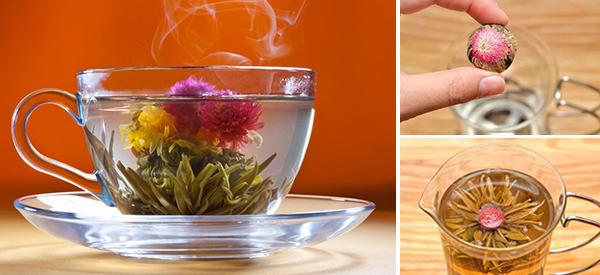
How to Make Medicinal Blooming Tea
Blooming Teas are among the neatest new trends surrounding today’s tea scene. You can purchase them already made in assorted flavors and flower patterns, each dried ball unfolding into a stunning blossom as you place it into a cup of hot water.
But did you know that you can make them at home with plants from your own backyard?
You can… and there are so many benefits to using wild plants and flowers that extend far beyond a gorgeous cup of tea.
Nature’s Most Attractive Medicinal Marvels
As springtime dawns in the Midwest USA, a magical thing happens. The sun’s warming rays usher in the restoration of life, giving way to the resurgence of the wildflowers. You often see some of the most beloved medicinal herbs and flowers pop up across suburban landscapes long before the humdrum chores of pruning and trimming begin.
The thawing season can be fun for those who appreciate and use these little darlings for tinctures, teas, and other herbal infusions, and nothing is more satisfying than the blessings of a harvest after a long cold winter.
You can use springtime or summer plants and wildflowers to make your own blooming tea balls, the idea being to use wild-harvested flowers and herbs that are both medicinal and beautiful. You can also add herbs from your garden or purchase them from your local farm markets. But many common flowers are great for making blooming tea balls, each with unique therapeutic uses. To help you decide which ones you want to use, here is a list of some of the most common backyard wildflowers that pack a holistic punch.
Related: 10 Spring Medicinal Plants My Grandmother Grew in Her Backyard (Video)
Dandelion (Taraxacum officinale)
Medicinal Uses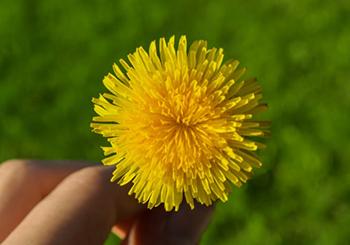
- Digestions— Promotes and stimulates liver enzymes and digestion. It also boosts your appetite and helps to balance good bacteria in the gut. It can help with indigestion, bloating and gas. In addition, studies show it increases Lactobacillus and Bifidobacterium (probiotics) in the gut.
- Liver— Chinese medicine uses dandelion to treat appendicitis and liver issues. Native Americans used it to treat upset stomach and liver problems.
- Other Uses— Hormone imbalance, blood sugar balance, lowers cholesterol, UTIs, detoxification, mastitis; because it treats infection and is anti-inflammatory, dandelions are a natural diuretic; that helps flush excess body water out of your kidneys and bladder, helps relieve fluid retention associated with PMS. Dandelion also provides significant benefits to the cardiovascular system.
Purple Dead Nettle (Lamium purpureum)
Medicinal Uses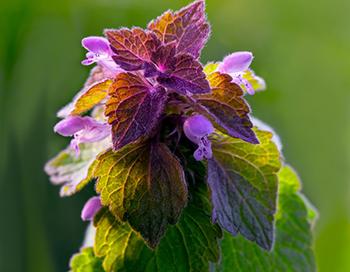
- Cold and Allergies— Purple nettle has a high dose of vitamin C and bioflavonoids, making it an excellent remedy for winter colds or seasonal allergies.
- Detox, Cleansing— You can make dead nettle tea for detoxing and cleansing since it’s a diaphoretic, diuretic, and laxative.
- Other uses— Purple dead nettle is also diuretic and diaphoretic so it can eliminate excess water in the body and help fight fever and chills.
Violets (native species: Viola papilionacea, V.sororia)
Medicinal Uses
- Blood and Lymph—Violet is used internally as a blood cleanser, respiratory remedy, and lymphatic stimulant and can also be used for swollen lymph nodes.
 Cough and Throat— Violets can be used to relieve sore throats and are also excellent for soothing dry throat and sinuses. Violet is also an excellent pulmonary remedy used for dry hacking cough: often indicated for bronchitis and whooping cough.
Cough and Throat— Violets can be used to relieve sore throats and are also excellent for soothing dry throat and sinuses. Violet is also an excellent pulmonary remedy used for dry hacking cough: often indicated for bronchitis and whooping cough.- Anxiety and Stress— Violet has relaxing and soothing properties, making it excellent for treating anxiety, stress and even insomnia.
- Mild pain reliever— Violets can be used to help alleviate headaches and other pain.
- Heart— Violet is strengthening to capillaries and can help reduce cholesterol levels and high blood pressure.
CAUTION: Avoid internal use with individuals who have the rare inherited disorder G6PD (glucose-6-phosphate dehydrogenase) deficiency, because it can aggravate hemolytic anemia.
Red Clover (Trifolium pretense)
Medicinal Uses
- Respiratory & Cough— Red clover is often used for repertory ailments like asthma and cough and has even been indicated for whooping cough.
 Female Hormone Balance— Red clover is good for all stages of female reproduction as it helps to balance hormones, especially estrogen. Studies show it reduces symptoms associated with menopause such as hot flashes and night sweats as well as symptoms of PMS, while also supporting breast health.
Female Hormone Balance— Red clover is good for all stages of female reproduction as it helps to balance hormones, especially estrogen. Studies show it reduces symptoms associated with menopause such as hot flashes and night sweats as well as symptoms of PMS, while also supporting breast health.- Blood — Red clover is a blood purifier and anticoagulant. It can help reduce blood clotting and helps clear impurities out of the blood overtimes. It may even help prevent strokes related to blood clotting.
- Heart—because of its cleansing quality, red clover is great for overall cardiovascular health. It helps correct deficiencies in the circulatory system and reduces the possibility of clots and arterial plaques. And the isoflavones found in red clover have been associated with an increase in “good” HDL cholesterol in pre-and postmenopausal women
White Clover (Trifolium repens)
Medicinal Uses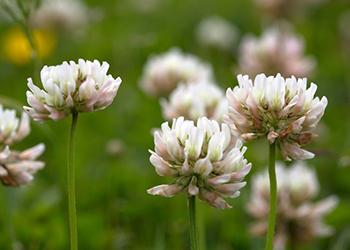
- Pain— White clover is said to reduce pain like headaches, rheumatic, and joint pain.
- Cough & Cold— White clover tea can alleviate congestion and cough and may also help reduce fever.
- Blood— White clover is a natural blood purifier.
Spearmint (Mentha spicata)
Medicinal Uses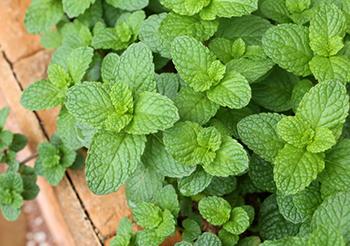
- Antimicrobial— Spearmint is often used for toothpaste, mouthwash, soaps and cosmetics because of its antimicrobial
- Pain— Some people find relief by using spearmint as a local pain killer or antispasmodic medication for cramps. It’s also soothing for a sore throat, toothache, or headaches.
- Digestive system— Spearmint is great for nausea and cramps and can be utilized during pregnancy and menstruation. In addition, it is known to relieve gas, bloating and indigestion, making it an excellent sidekick for IBS symptoms and gallbladder problems. It can also reduce vomiting and relieve morning sickness.
- Balanced hormones— Studies show spearmint reduces androgen levels which are responsible for facial hair growth and help balance hormones.
- Other Uses— Repels insects, lowers blood pressure and improves memory.
Homemade Blooming Tea Ball Instructions
You can use whatever flowers or plants you want. We made the blooming tea balls in the pictures below from spearmint leaves, violet leaves, dandelion flowers, and violet flowers. Here is what you will need:
- Fresh flowers and herbs of choice
- 100 % cotton thread
- Sewing needle
- Cheesecloth
- Dehydrator
- Scissors
Step 1. Assemble a base of leaves by laying large leaves in a cross pattern. We used spearmint leaves, but you can use the leaves of the dandelions, which would make a much larger bloom.
Step 2. Fan out the base leaves to create an even pattern.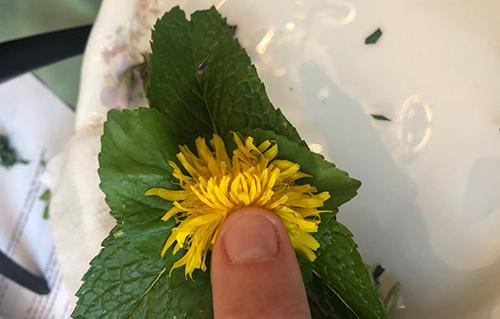
Step 3. Gently attach your first flower by sewing up through the bottom of the leaf base and sewing through the bottom of the flower. Keep stitching back through the flower and the leaves until secured.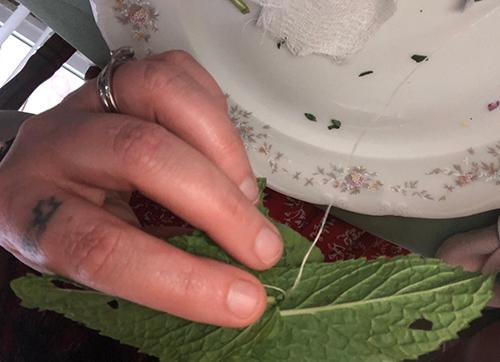
Step 4. Carefully attach the rest of the desired number of flowers in the same way.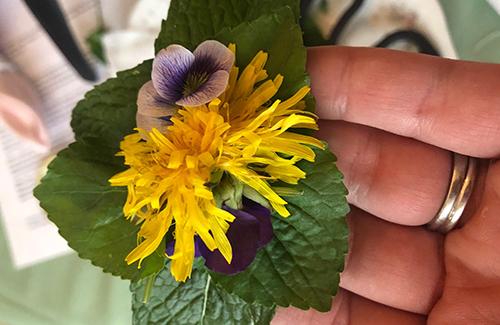
Step 5. Carefully fold the outer leaves up and around the flower to form a ball and wrap it with a piece of cheesecloth. Tie it off with a piece of thread.
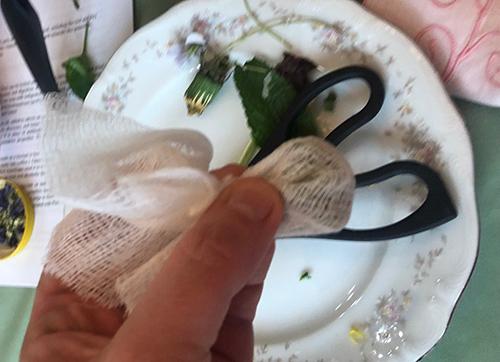
Step 6. Place your blooming tea balls in a dehydrator for four hours.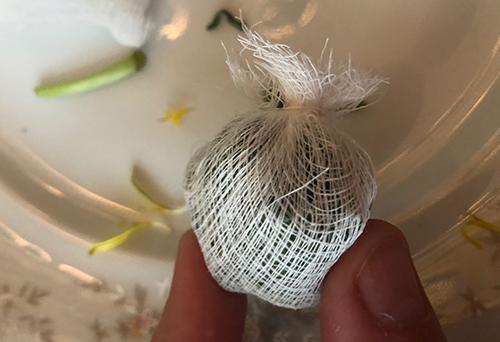
Step 7. Remove the balls from the dehydrator and remove the cheesecloth with your scissors. Take care not to “crunch” them while you are getting them out.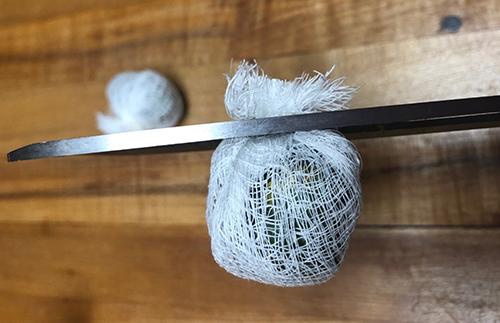
Step 8. Place your blooming tea balls into a cup or clear tea pot and add hot water.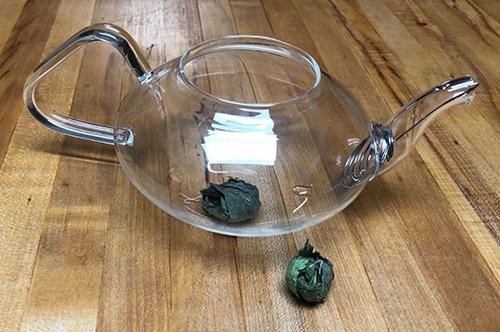
Step 9. Let it seep for 7-10 minutes or until it blooms.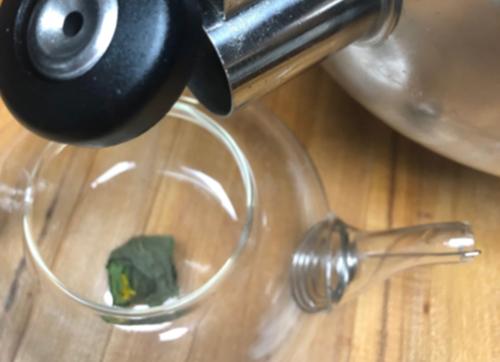
Step 10. Add a sweetener if you want and enjoy!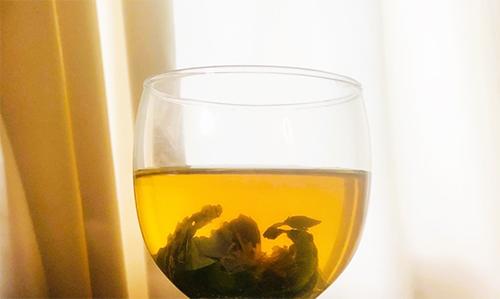
When flowering teas are infused, they open into a different shape. This may be a larger sphere, the shape of a basket, a garland shape or various other shapes. Although they typically open gradually, some flowering teas feature flowers that have been sewn into a strand or garland that opens quickly, popping out of the tea leaves once the tea leaves have been softened and opened enough by the hot water. These types of flowering teas tend to be showy and dramatic compared to their more traditional counterparts.
You may also like:
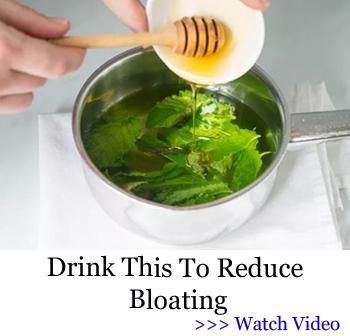 10 Teas That should Always be In Your Cupboard
10 Teas That should Always be In Your Cupboard
Discover The Mysterious Mix Of Herbs That Melts 6Lbs Per Week & Stops Cravings! (Learn More)
The Anti-Inflammatory Blue Tea

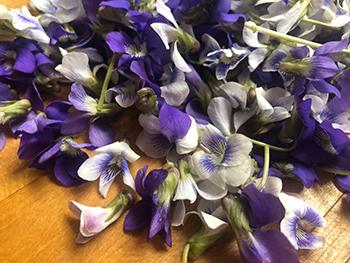 Cough and Throat— Violets can be used to relieve sore throats and are also excellent for soothing dry throat and sinuses. Violet is also an excellent pulmonary remedy used for dry hacking cough: often indicated for bronchitis and whooping cough.
Cough and Throat— Violets can be used to relieve sore throats and are also excellent for soothing dry throat and sinuses. Violet is also an excellent pulmonary remedy used for dry hacking cough: often indicated for bronchitis and whooping cough.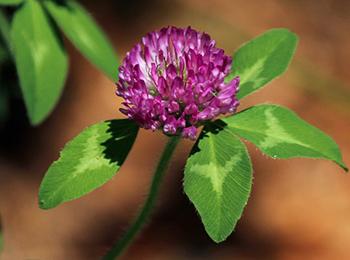 Female Hormone Balance— Red clover is good for all stages of female reproduction as it helps to balance hormones, especially estrogen. Studies show it reduces symptoms associated with
Female Hormone Balance— Red clover is good for all stages of female reproduction as it helps to balance hormones, especially estrogen. Studies show it reduces symptoms associated with
Lots of good tea ideas. Thank you. Can you use unopened rose blossoms and other types of blooms like orange, lemon, peach, ect.?
Directions say “You can use whatever flowers or plants you want”
How long should the tea balls dehydrate?
The recipe says four hours
Directions say 4 hours
At the beginning, you write that these flowers “pack a homeopathic punch”. What does this mean? It’s confusing because homeopathy has nothing to do with tea infusions and I don’t understand the reference.
Homeopathy is a gentle and natural healing system that works with the body to relieve symptoms, restore vitality, and improve overall health.
Can take several forms: teas, pastes, powders etc….
Use the flowers straight from garden pour on water and let infuse delicious
What if you do not have a dehydrator could you put them out to dry may be in the sun or somewhere where it’s warmer?
Hi Gloria,
Yes, air drying is another method of drying herbs. You will need a warm, shady spot with good ventilation. You don’t want them directly in the sun because the intense heat and sun can quickly degrade the herbs.
However, air drying herbs will take longer, usually several days.
Many blessings and good health!
LOVE THE BOOK, One thing I would’ve made me LOVE it even MORE, would be if it had separate sections for each regions of the country. It’s a bit frustrating, to find a plant your very interested in, wanting to find etc…
JUST to find it only grows on the other side of the continental US. Still would love to travel to Western US, where I Actually could possibly be able to Touch a Sequoia! But alas, finances won’t allow it… So Yeah, my opinion (such as it is) really would be SO MUCH more helpful, were it separated by regions of the country, the reader/forager would be able to see what’s outside your doorstep, but would ALSO have it for reference when traveling to another regions of the country to explore. HONESTLY I Don’t mean to criticize the book, CLEARLY the time, and indepth research, and sweat too I’d say, TREMENDOUS WORK!!! It’s just an expression of one personal opinion, that MAYBE others have also? So when the NEXT Book is written, or this one is revised/updated HOPEFULLY my suggestion will reach the author and will be taken in the spirit it was given… Keep up the WONDERFUL WORK, Thank You!!
BEST REGARDS,
Barbara Slaven
Hi Barbara,
Thank you so much for your comment. We really appreciate you took the time to send us your feedback. Your feedback is very important to us. It means that we can better understand what we are doing well, and where there are areas where we need to make improvements.
Many blessings and good health!
What a great idea!
Wouldn’t these make the most wonderful, unique gifts?